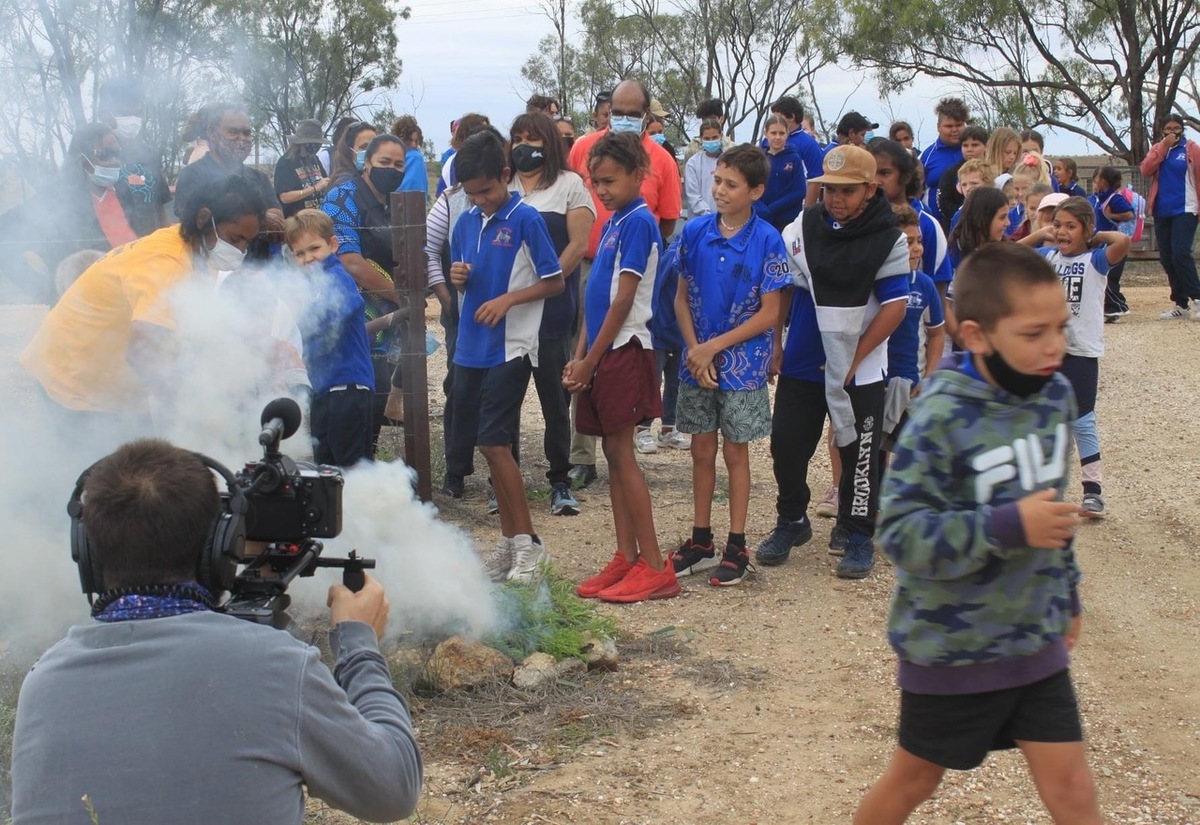Local students call for the return of Indigenous artefacts from across the world
Laura Williams
30 November 2021, 8:12 PM
 A smoking ceremony held in Collarenebri in the making of the documentary. (Image: Collarenebri Central School)
A smoking ceremony held in Collarenebri in the making of the documentary. (Image: Collarenebri Central School)Local students took to the world stage las week, presenting a short film at a Geneva Conference as they pleaded to return their sacred artefacts to their Collarenebri.
After students of Collarenebri Central School and Walgett Community College learned of the cultural significance of the sacred carved trees of the Banarway Bora ground, the next step was a call for help.
Getting their chance in front of the camera, the students collaborated in making the documentary ‘Gaaguuwiya dhawungu’ or ‘Bring Back Home’, which was presented at the Ethnography Museum of Geneva last week as part of their ‘Decolonisng Provenance Research’ conference.
While some of Collarenebri’s carved trees date back 800 years in Kamilaroi culture, their most recent years have been spent in museums and private collections after the destruction, theft and removal of 52 trees in 1949.
Just a handful remain in the community, protected by a cage enclosure.
Since learning of their history, local students are campaigning for the return of the sacred Indigenous artefacts.
Collarenebri Central School’s principal Michael Davison says the return of the trees is essential to the balance of local students’ education.
“Having these artefacts restored to country will help ensure future generations can build on their culture and identity, in addition to their western education,” Mr Davison said.
“Students have used their knowledge of the trees and patterns as inspiration for school programs and art exhibitions over many years, but their engagement increased after seeing footage of the carved trees’ removal for the first time in a consultation with artist Brook Andrew for the 2020 Sydney Biennale,” he said.
Aboriginal Education Officer at Collarenebri Central School Arron Hynch features in the documentary discussing the impact of Indigenous cultural education in the school.
“Sacred trees hold many of our ancestors’ stories. They connect us to our identity, language, culture and heritage, and most importantly, connection to country,” Mr Hynch said.
“Giving back those trees gives back our history, identity, and a cultural education opportunity for the children,” he added.
Mr Hynch said bringing focus to cultural education has been instrumental in building interest and participation in class.
Collarenebri’s Local Aboriginal Land Council Chairperson Ros McGregor said that she has worked with the students to see them become advocates for the return of the trees.
“There are still some trees on country, but the return of the others will give us connection to our own knowledge system and an opportunity to continue learning lessons from the very first bora,” she said.
We can never go back to the times and way of life we had when the trees were carved, but the images and patterns on the trees speak directly to us as Kamilaroi people,” Ms McGregor said.
The conference in Geneva shared stories from around the world of experiences of repatriating cultural artefacts and negotiating the future of colonial collections.
While many of the trees have been lost, six feature in the Victorian museum in Melbourne, and one is known to be in a Swiss collection.
The film ‘Bring Back Home’ is the beginning of the journey to have the trees returned to the Collarenebri community, and with it, a piece of their cultural identity.